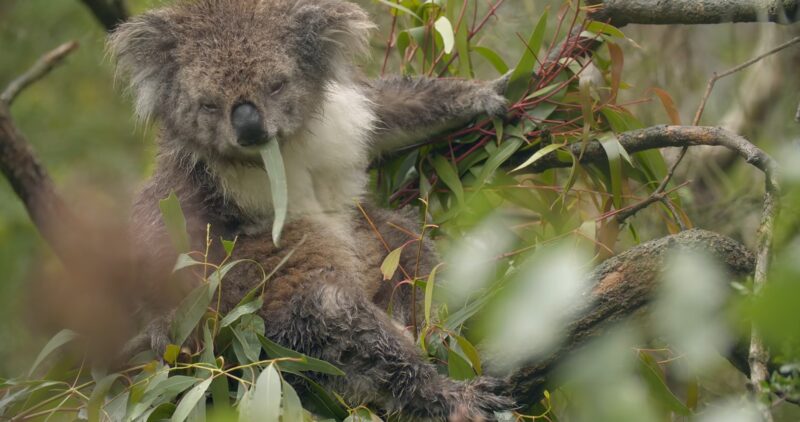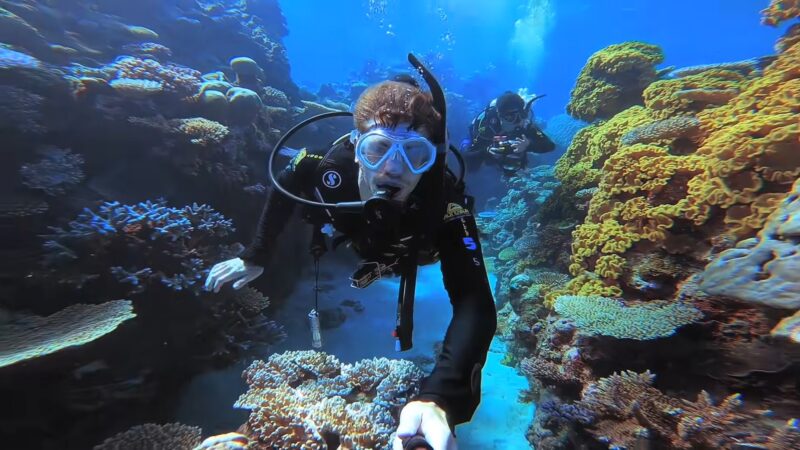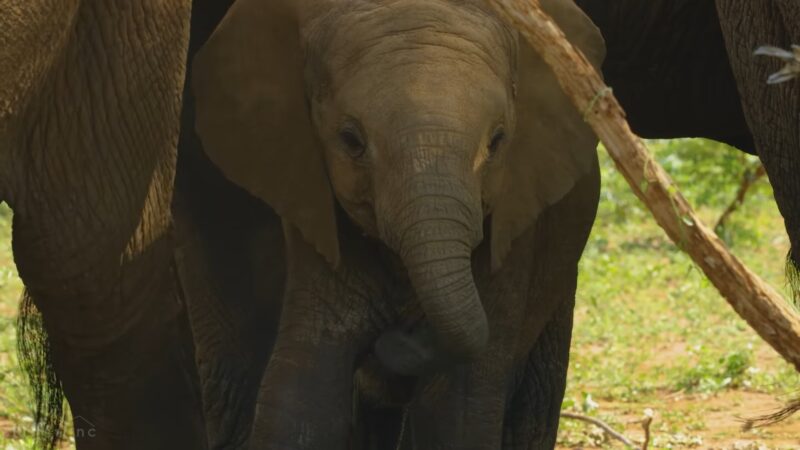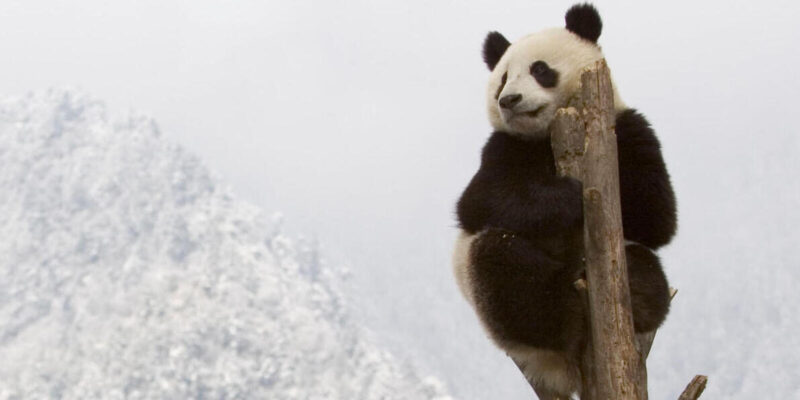Climate change is one of the most pressing issues facing our planet today. As global temperatures rise and weather patterns shift, the natural world is experiencing significant disruptions. Among the most vulnerable to these changes are the world’s diverse and magnificent animal species.
From melting ice caps to shifting ecosystems, climate change is threatening the survival of various creatures across the globe. In this blog post, we will explore 10 animals that are particularly affected by climate change and understand the consequences they face.
10. Polar Bears
Polar bears are iconic symbols of the Arctic, relying heavily on sea ice to hunt for seals, their primary food source. However, due to the melting of polar ice caps caused by global warming, polar bears are experiencing a significant loss of habitat and food scarcity. As the ice retreats further each year, these magnificent creatures have to swim longer distances to find food, leading to exhaustion and a higher mortality rate among cubs and adult bears.
- Estimated Global Population (2015): Approximately 22,000-31,000 individuals
- Population Trend: Declining due to loss of sea ice and reduced access to food sources.
Polar Bear Population Trends by Subpopulations:
| Subpopulation | Population Estimate (2015) | Population Trend |
|---|---|---|
| Southern Beaufort Sea | 900 | Declining |
| Western Hudson Bay | 800 | Declining |
| Chukchi Sea | 2,000-3,000 | Declining |
| Barents Sea | 2,650 | Stable |
| Kara Sea | 730 | Declining |
| Gulf of Boothia | 1,500 | Declining |
| Foxe Basin | 2,000 | Declining |
| Norwegian Bay | 300 | Declining |
| Lancaster Sound | 2,100 | Stable |
9. Koalas

Australia’s koalas, known for their charming appearance and docile nature, are iconic marsupials that play a vital role in their native eucalyptus-dominated ecosystems. These cuddly creatures rely almost exclusively on eucalyptus leaves for their survival, making them highly vulnerable to the impacts of climate change. Rising temperatures and prolonged droughts, driven by global warming, have intensified the pressure on their already sensitive food source.
| Climate Change Impact | Consequences |
|---|---|
| Rising Temperatures and Droughts | – Depletion of eucalyptus leaves leading to malnutrition and dehydration among koalas. |
| – Increased susceptibility to diseases and health issues. | |
| Extreme Heat Events | – Heat stress among koalas during prolonged and intense heatwaves. |
| – Potential organ failure and mortality. | |
| Altered Breeding Patterns | – Disrupted breeding seasons due to changing rainfall patterns and food availability. |
| – Reduced breeding success and population decline. |
8. Adélie Penguins
Adélie penguins, the feisty and adorable inhabitants of Antarctica, have adapted remarkably to survive in one of the harshest environments on Earth. However, the rapid changes brought about by global warming are putting their resilience to the test. Adélie penguins rely heavily on sea ice for their nesting and hunting activities. They build their nests on ice-free rocky areas, and the ice serves as a platform to access their primary food source: krill, fish, and squid.
| Climate Change Impact | Consequences |
|---|---|
| Decreasing Sea Ice Coverage | – Limited availability of suitable nesting sites for Adélie penguins. |
| – Breeding period out of sync with the availability of nesting sites. | |
| – Reduced breeding success and chick survival. | |
| Increased Swimming Distances | – Extended travel time to find food leading to increased energy expenditure. |
| – Potential stress and exhaustion for Adélie penguins. | |
| Decline in Krill Population | – Reduced availability of krill, a primary food source for Adélie penguins. |
| – Impact on overall nutritional health and population decline. |
7. Coral Reefs

Coral reefs are incredibly diverse ecosystems that support numerous marine species. However, climate change-induced factors like ocean acidification and rising sea temperatures lead to coral bleaching events. Coral bleaching occurs when stressed corals expel the symbiotic algae living in their tissues, causing the corals to turn white and eventually die. As a result, entire coral reef ecosystems, along with the creatures that rely on them for shelter and food, are at risk.
| Coral Reef | Location | Coral Cover (2019) | Decline from Historical Levels |
|---|---|---|---|
| Great Barrier Reef | Australia | 29% | 50% |
| Florida Reef Tract | USA | 6% | 85% |
| Maldives | Indian Ocean | 14% | 50% |
| Seychelles | Indian Ocean | 24% | 30% |
6. African Elephants

African elephants, majestic and intelligent creatures, have been keystone species in their ecosystems for centuries. However, climate change is putting tremendous pressure on their survival and the delicate balance of their habitats. One of the most significant impacts of climate change on African elephants is the alteration of rainfall patterns and vegetation distribution. Many regions are experiencing longer and more severe droughts, leading to changes in the availability of water and food sources for these gentle giants.
The changing climate has disrupted the traditional migration routes of African elephants, as they often rely on seasonal movements to find food and water. With disrupted migration patterns, elephants are finding it increasingly challenging to access vital resources. As a result, they may venture into human settlements in search of food and water, leading to heightened human-elephant conflicts. These conflicts not only pose a risk to human lives and property but also put elephants in harm’s way as they face retaliation from local communities.
Moreover, the impact of climate change on vegetation has implications for the elephants’ diet. As certain plant species decline due to changing weather conditions, elephants may struggle to find suitable food sources. This scarcity of food can result in malnutrition and reduced reproductive success among females, ultimately affecting the overall population growth.
In addition to the direct impacts of climate change on food and water resources, African elephants face habitat fragmentation due to human activities, such as deforestation and land conversion. Climate change exacerbates these issues, further reducing the available habitat for elephants to roam freely. As their natural habitats shrink, it becomes increasingly difficult for these large mammals to find suitable spaces to live and raise their young.
Conservation efforts are crucial to mitigate the impact of climate change on African elephants. Protecting their habitats, establishing wildlife corridors, and implementing measures to reduce human-elephant conflicts are essential steps in safeguarding the future of these magnificent creatures.
5. Monarch Butterflies
The annual migration of monarch butterflies from North America to Mexico is a breathtaking natural spectacle. However, climate change poses a significant threat to their survival, affecting every stage of their life cycle. Monarchs depend on milkweed plants for laying their eggs and as the primary food source for their caterpillars. Unfortunately, the availability of milkweed has been declining due to changing agricultural practices and habitat loss.
With rising temperatures and extreme weather events, the monarch’s overwintering habitats in Mexico are also at risk. Storms and temperature fluctuations can disrupt the delicate balance necessary for their survival during the winter months. Additionally, changing weather patterns in their breeding grounds impact the timing of their migrations, leading to potential mismatches between the availability of milkweed and the arrival of the butterflies.
The use of pesticides further compounds the challenges faced by monarch butterflies. Pesticides not only directly harm the butterflies but also contribute to the decline of milkweed plants, which are crucial to their survival. Furthermore, the impact of pesticides extends beyond monarchs, affecting other pollinators and the overall health of ecosystems.
Conservation efforts to protect monarch butterflies are multi-faceted and require collaboration at regional and international levels. Planting native milkweed species, creating monarch-friendly habitats, and reducing pesticide use are essential steps to support their population. Additionally, protecting their overwintering sites in Mexico is crucial to ensure the successful completion of their awe-inspiring migration.
4. Leatherback Sea Turtles
Leatherback sea turtles are awe-inspiring creatures that have navigated the Earth’s oceans for over 100 million years. However, their survival is threatened by the impacts of climate change on their nesting habitats. As global temperatures rise, so do sea levels, leading to the erosion of nesting beaches. This erosion can result in a loss of suitable nesting sites for female leatherback turtles, reducing their reproductive success.
Rising sea temperatures also play a role in the challenges faced by leatherback sea turtles. Warmer sand temperatures can influence the sex of the hatchlings, as warmer nests tend to produce more females. Skewed sex ratios can disrupt the natural balance of the population and potentially hinder successful reproduction.
Leatherback sea turtles heavily rely on jellyfish as their primary food source. However, climate change affects the distribution and abundance of jellyfish in the oceans. As sea temperatures rise, jellyfish populations may shift, impacting the availability of food for these massive turtles.
Moreover, the leatherback sea turtles face numerous human-related threats, including accidental entanglement in fishing gear and plastic pollution. Climate change exacerbates these existing threats by affecting the distribution of prey species and creating more unpredictable and severe weather events.
To safeguard the leatherback sea turtle population, conservation efforts should focus on protecting nesting beaches, reducing plastic pollution, and promoting responsible fishing practices. Additionally, global efforts to mitigate climate change and reduce greenhouse gas emissions are vital to safeguard the future of these magnificent marine creatures.
3. Snow Leopards
Snow leopards, the elusive and enigmatic big cats of Central Asia, are at the mercy of climate change’s far-reaching effects. As global warming leads to the melting of snow and glaciers, snow leopards face the loss of their natural habitat. These cats are specially adapted to life in high-altitude mountain ranges, but as their habitats shrink, they are forced to move to higher elevations, often closer to human settlements.
As snow leopards shift their territories to higher altitudes, they encounter new challenges, including increased competition for food. Their prey species, such as Himalayan blue sheep and ibex, also depend on specific habitats that are now impacted by climate change. This results in reduced availability of prey, leading snow leopards to venture into areas populated by livestock, leading to conflicts with herders.
Furthermore, the melting of snow and glaciers influences the availability of water sources in these regions. Snow leopards and their prey rely on freshwater streams and rivers that originate from glaciers. With the loss of glaciers and decreased snowfall, there is a risk of reduced water availability during critical times of the year.
Snow leopards also face the threat of poaching, as their magnificent fur and body parts are highly valued in illegal wildlife trade. Climate change can indirectly impact poaching by pushing local communities into poverty due to unpredictable weather patterns and declining agricultural productivity. This, in turn, can lead to an increase in poaching as a means of economic survival.
Protecting the snow leopard population requires a multifaceted approach, including conservation efforts to secure their habitats, support local communities in adapting to climate change, and combat illegal wildlife trade. International cooperation is crucial to address the transboundary nature of snow leopard conservation.
2. Atlantic Puffins
Atlantic puffins, with their colorful beaks and distinct appearance, are seabirds that rely on stable marine ecosystems for their survival. However, climate change is disrupting the distribution and availability of their primary prey species, which is essential for their survival.
Puffins mainly feed on small fish like herring and sand eels, which are sensitive to changes in ocean temperatures. As sea temperatures rise, the distribution of these fish species may shift, affecting the availability of food for puffins. Additionally, rising sea temperatures can alter the timing of fish migrations, potentially leading to mismatches between the availability of prey and the puffins’ breeding season.
The impact of climate change on the marine food web has cascading effects on puffin populations. If puffins are unable to find enough food during their breeding season, it can lead to reduced reproductive success and chick survival. Food shortages can also lead to decreased body condition and overall health of adult puffins.
Furthermore, the warming of the oceans has been linked to changes in prey abundance and distribution, resulting in puffins having to travel greater distances to find food. This increased foraging effort can be detrimental to their energy reserves and may result in compromised breeding success.
Conservation efforts to protect Atlantic puffins should focus on maintaining healthy marine ecosystems by mitigating climate change impacts and promoting sustainable fishing practices. Marine protected areas can offer essential refuges for puffins and their prey, ensuring the availability of food resources during critical stages of their life cycle.
1. Harp Seals
Harp seals are a vital part of the Arctic ecosystem and are well-adapted to their icy habitat. However, climate change is posing significant challenges for these adorable marine mammals. As sea ice declines in the Arctic, harp seals are facing difficulties in finding suitable breeding sites.
Harp seals give birth to their pups on floating sea ice, which provides a safe and stable platform for raising their young. With the decline in sea ice cover, the seals may have to travel greater distances to find suitable ice floes, leading to more extended separations from their pups and increased vulnerability to predation and other dangers.
Additionally, the timing of sea ice formation and breakup is shifting due to climate change. As a result, the availability and duration of ice floes suitable for harp seal breeding may become unpredictable. This unpredictability can disrupt the timing of seal births, impacting pup survival rates.
Moreover, harp seals rely on a variety of prey species, including fish and shrimp, for their survival. Climate change’s impact on the Arctic marine ecosystem can alter the distribution and abundance of these prey species, potentially leading to food scarcity for harp seals.
Conservation efforts to protect harp seals should focus on mitigating climate change impacts and preserving their icy habitat. International cooperation is vital, as harp seals migrate across vast distances and are subject to environmental changes beyond the Arctic. Protecting their prey species and reducing the risk of oil spills and other pollutants in their habitat are also essential steps to ensure their survival.
Conclusion
Now, if you would love to broaden your understanding of the impact of climate change on animal species and gain valuable knowledge, consider watching some of the best movies about climate change that will leave you speechless!
Climate change is an undeniable threat to the world’s biodiversity, impacting animals across various ecosystems and continents. From polar bears struggling to find food on shrinking ice to coral reefs facing bleaching events, the consequences are evident and concerning. As humans, we must take responsibility and act collectively to address the causes of climate change and implement conservation measures to protect these vulnerable species. Only through comprehensive and immediate action can we hope to secure a sustainable future for both the animals and ourselves.
Related Posts:
- 10 Climate Change Movies To Watch in 2024: Lights,…
- How Will Climate Change Affect Arctic Animals? -…
- Methane - The Ticking Time Bomb: A Key to Climate…
- 20 Ways to Reduce Climate Change - Save Our Planet
- 10 Best Books on Climate Change in 2024 - In-Depth…
- Crypto And Climate Change: Uncovering The Carbon…








